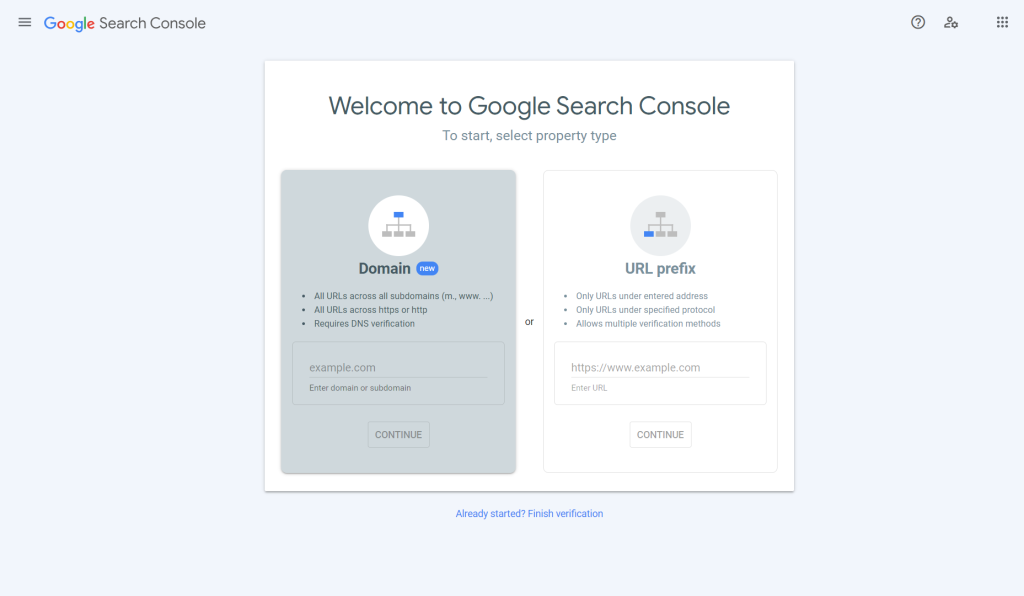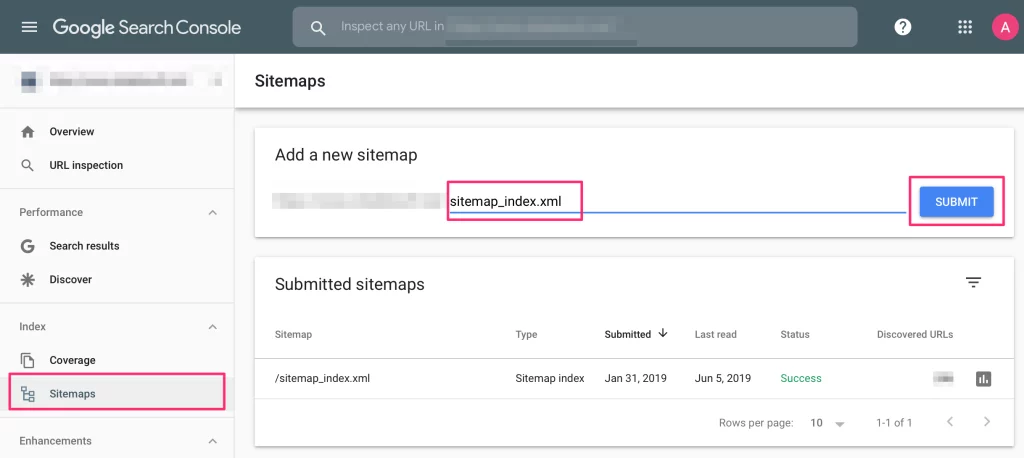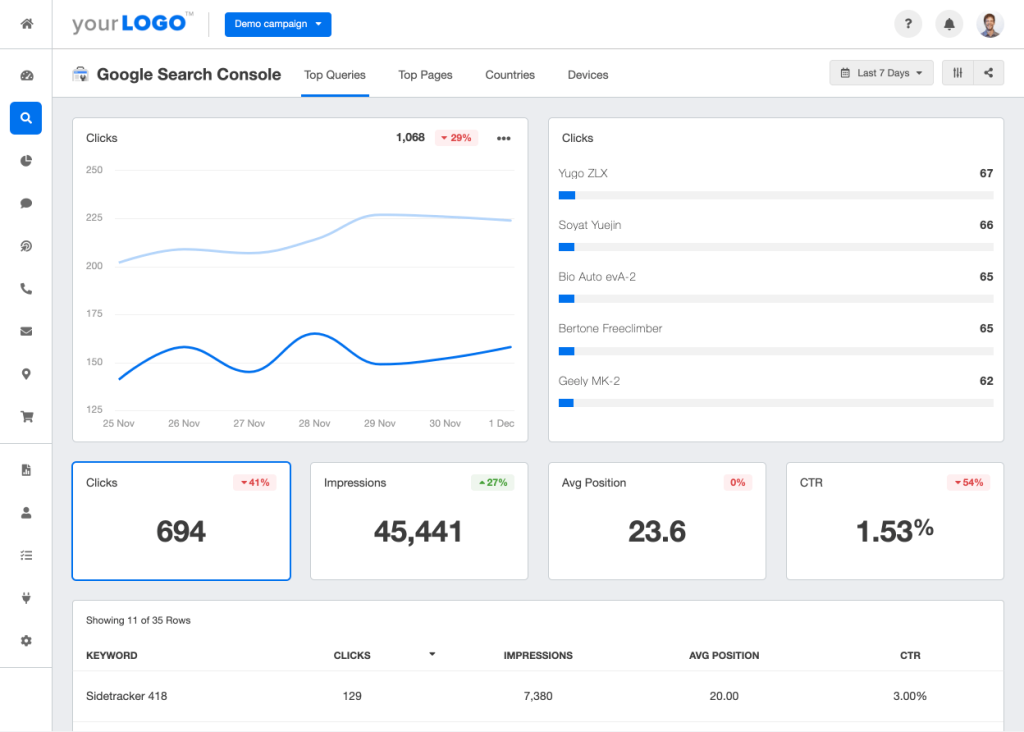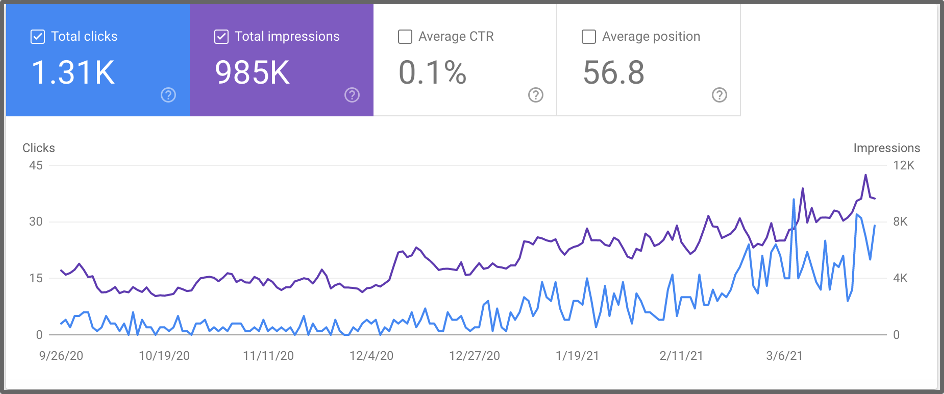Imagine being an esteemed maestro, leading an orchestra filled with hundreds of musicians, and you suddenly lose your musical sheets. For many website creators and digital marketers, this is precisely how it feels to navigate the ever-changing world of search engine optimization (SEO) without the right tools. Fortunately, Google Search Console can be the symphony sheet that brings harmony between your website’s elements and on-page SEO. But, how do you make use of this powerful instrument effectively? Welcome to On-Page.ai‘s step-by-step guide on unlocking on-page SEO with Google Search Console, where we’ll demystify the process and help you conduct a masterpiece in search rankings. Trust us; hitting those high notes has never been easier!

To use Google Search Console for On-Page SEO, start by verifying site ownership and checking the Index Coverage report. From there, identify crawl errors, mobile usability issues, and duplicate content. Analyze page speed insights within Search Console to improve site performance. Also, integrate Google Analytics with Search Console to get a better understanding of user behavior and website performance. Regularly checking Search Console can help you improve your website’s On-Page SEO and drive more relevant traffic to your site.
Getting Started with Google Search Console
If you want to improve your website’s search engine performance, the first step is to make use of Google Search Console. This free tool from Google provides vital information on how your website is being crawled, indexed and served by Google. By using it, you can identify any technical issues that are holding back your website’s visibility and take steps to remedy them.
For instance, suppose you notice that your website is not appearing in search results for a particular keyword even though it ranks well for other keywords. In such a case, you could use the Search Console to check if there are any crawl errors associated with that specific keyword or page. The tool would help you pinpoint why that page is having issues getting indexed correctly.
When starting out with the tool, it might seem a bit overwhelming, but don’t worry – the intuitive interface leads quickly to a clear understanding of the various features. In this article, we’ll explore some of the essential features that will help you get started with improving your website’s search engine performance.
So let’s start by discussing how to set up and verify your account on Google Search Console.
Account Setup and Verification
The first step in leveraging Google Search Console is to create an account. To do this, sign into your Gmail account and navigate to the Google Search Console homepage. From there, click on “Start Now” and proceed through the following steps:
First, type in your domain name exactly as it appears in your website’s URL field. Once done click “Continue”. Next, select the verification method you prefer. There are several verification methods provided like adding an HTML file or DNS record or adding tracking code to Analytics. You need only choose one way which best suits you depending on what you have access to whether it be domains or hosting credentials.

For instance, if you have control over your website’s files, choosing to add the HTML tag is recommended. On the other hand, if you’re not familiar with programming, you’re better off choosing a different verification method like adding a DNS TXT record or using Google Analytics.

Once the verification process is complete, your account will be set up and connected to your website.
Some people might wonder why they need to go through this process of account setup and verification in the first place. The reason is that without performing these steps, there is no way for Google Search Console to know that you are indeed the owner of the website or web property you wish to monitor. This would leave a lot of room for malicious users to manipulate search results and create havoc on the internet.
By verifying ownership of your website or property within Google Search Console, Google can provide accurate information about how it crawls and indexes your content. Additionally, it helps prove to both Google and yourself that you have a right to request any changes made by those crawlers.
Now that we’ve established why account setup and verification are essential let’s further explore how to improve your website’s on-page SEO analysis with Google Search Console.
- Creating an account and verifying ownership in Google Search Console is crucial for accurate monitoring of your website’s performance. Choosing the right verification method is essential depending on what access you have to the website files. This step helps Google provide accurate information about how it crawls and indexes your content, and proves your right to request any changes made by those crawlers. Overall, setting up a Google Search Console account is integral to improving your website’s on-page SEO analysis.
Sitemap Submission
Submitting a sitemap to Google Search Console is one of the most crucial steps towards optimizing your website’s on-page SEO. A sitemap is essentially a roadmap that outlines all the web pages in your site and provides vital information that search engines need to index correctly.
Sitemaps come in different formats, and it’s essential to submit the right type of sitemap. The most common types are XML sitemaps, which are ideal for large and complex sites since they provide additional information about each web page, including metadata like last modified dates, frequency of updates, and priority levels.
Submitting a sitemap is simple but important. After you have verified ownership of your website, log in to Google Search Console and navigate to the ‘Sitemaps’ section under the left menu’s ‘Index’ tab. Enter the URL pointing to your sitemap (e.g., www.example.com/sitemap.xml) and submit it.

Once Google has processed your sitemap submission, you can check its status by clicking on the submitted sitemap. You can then see how many pages were counted, indexed or excluded, as well as any errors or issues detected during crawling.
For example, suppose you’re running an e-commerce store with thousands of product pages that are regularly updated. In that case, submitting an XML Sitemap with detailed information can help Google understand the structure and hierarchy of your site quickly. It also helps Google detect new updates and crawl your site faster without missing any critical pages.
Furthermore, according to a study by Yoast SEO, websites with submitted XML sitemaps had 96% of their pages indexed compared to only 4% for those without a sitemap. This statistic clearly shows that submitting a sitemap plays an integral role in maximizing your on-page SEO potential.
Now that we have explored how to submit a sitemap to Google Search Console, let’s dive into how you can use the platform to enhance your on-page SEO.
On-Page SEO Analysis in Google Search Console

Google Search Console provides detailed insights and analysis that can help you refine your on-page SEO strategy. One of the most valuable tools is the ‘Coverage’ report, which shows how well Googlebot was able to crawl and index your site’s pages.
This report identifies crawl errors, such as broken links (404), server errors (5xx), soft 404s, and other issues that could negatively impact your search engine rankings. By correcting these errors, you ensure that your site stays healthy for both users and search engines.
Another critical feature of Google Search Console is the ‘Mobile Usability’ report, which identifies pages with mobile usability issues such as text too small to read or tap targets being too close together. This report helps you improve user experience by ensuring that your site is mobile-friendly.
In addition to crawl errors and mobile usability issues, Google Search Console also enables you to monitor your website’s performance by providing data on individual pages and the entire site’s query traffic, impressions, clicks, click-through rate (CTR), and average position.
This information allows you to analyze specific areas needing improvement regarding content quality and user engagement. You can identify high performing pages with low impressions and optimize them better to attract more traffic.
Think of Google Search Console like a doctor conducting regular check-ups on your website’s health. By identifying problems early and treating them quickly, you ensure your website operates smoothly without suffering significant consequences like lower site authority or loss in search engine rankings.
It is important to note; however, there is still some debate in the SEO community regarding whether Google Search Console metrics should be taken with a grain of salt since most of the data provided may not accurately reflect organic traffic. Nonetheless, it remains one of the best free tools we can leverage to enhance our on-page SEO.

Now that you have an overview of the valuable features and insights Google Search Console provides, it is time to put them into practice and refine your website’s on-page SEO strategy.
Identifying and Fixing Crawl Errors
If you want to unlock the true potential of your website, optimizing on-page SEO is crucial. One important aspect of on-page optimization is identifying and fixing crawl errors, which are caused when search engine bots are unable to crawl your website properly. Google Search Console offers an easy way to detect these errors and fix them. Let us look at how.

For instance, let’s say you’re running an e-commerce site that sells shoes, and some of the pages on your website have not been indexed by Google due to a crawl error. In such a case, any customer who searches for “shoes” will find other e-commerce sites, but not yours. This means every shoe sale opportunity is missed just because of a crawl error. By using Google Search Console, you can identify the problem and fix it promptly.
When using Google Search Console for identifying crawl errors, you should begin by checking the Coverage report. This report shows information on indexing status, crawling issues or errors. If there’s something wrong with your site that needs fixing in order for it to be crawled better by Google bots, this report will help you understand what the issue is so that it can be fixed.
However, not all crawl errors might require immediate attention. Some are just ‘soft 404s,’ which are caused when a page redirects to itself due to various reasons like server issues or changes in URL structure without proper redirections set-up. These usually do not impact SEO as much as hard 404s since they do not result in users landing on pages without content.
Now that we know how to detect and prioritize crawl errors in the Coverage report, let’s dive into another aspect of on-page optimization – monitoring mobile usability.
Monitoring Mobile Usability
With mobile devices becoming the primary way of accessing the internet, optimizing for mobile usability is key to boosting your website’s ranking on SERPs. Google Search Console offers a Mobile Usability report that helps improve the experience of users on mobile devices.
Let us look at an example to understand how important mobile optimization can be. Imagine you own a restaurant where customers can order food online. However, your website doesn’t display correctly on mobile devices, leading to a poor user experience and ultimately causing potential customers to leave your site before placing their orders.
Mobile Usability Report
The Mobile Usability report in Google Search Console covers issues such as font size, touch elements, page speed, and other factors like screen height and width. This report helps you identify issues that might prevent users from interacting with the content on your site in a meaningful and logical manner.
One common misconception that website owners have is that if their site works well on laptops or desktops, it will work just as well on mobile phones. However, this is not always the case since the screen size and other properties vary significantly between these devices. Therefore, optimizing for mobile layout and usability must be done alongside desktop optimization.
- A 2020 study by Backlinko analyzed over 5 million search results and found that using specific keywords in title tags, header tags, and the body of content is associated with a higher Google ranking.
- According to a SEMrush study, duplicate content, missing alt attributes, broken internal links, and low text-to-HTML ratio are common on-page SEO issues faced by websites, which can be identified using Google Search Console.
- A study published in SERPWatch in 2021 revealed that optimizing mobile usability led to an improvement in average organic traffic by up to 29%, which can be achieved through analyzing mobile usability data provided in the Google Search Console.
Enhancing Content Optimization

Content optimization is an essential factor that can make or break your on-page SEO efforts. Google Search Console offers valuable insights to boost your content optimization game. By analyzing the performance of your website’s content, you can identify opportunities to improve your rankings. Let’s take a look at some ways in which you can enhance your content optimization with Google Search Console.
For example, you can use the ‘Search Analytics’ report in Google Search Console to identify underperforming pages on your website. This report shows you the number of clicks, impressions, click-through rate (CTR), and average position of each page. You can sort this data by a specific query, page, country, device type, and date range.
By identifying pages that have a high impression count but a low CTR and/or average position, you can gain insights into what aspects of the page could be improved to increase its visibility and attract more clicks. These could include the meta title and description tags, headings, images, and text content.
Think of optimizing your content like making a batch of chocolate chip cookies. You want to add just the right amount of ingredients to make them taste delicious. In the same way, by analyzing underperforming pages in Google Search Console, you can add just the right amount of keywords and other optimization elements to rank higher in search engine results pages (SERPs).
Now let’s move on to how you can check index coverage and duplicate content in Google Search Console.
Checking Index Coverage and Duplicate Content
Index coverage and duplicate content are two critical factors that impact your website’s ranking on Google SERPs. With Google Search Console’s ‘Index Coverage’ report feature, you can quickly find these issues and fix them. Here are some tips for checking index coverage and duplicate content:
First, you need to check the status of your index coverage. Google Search Console shows you which pages have been indexed and which ones remain unindexed. The ‘Coverage’ report also highlights crawl errors, warnings, and excluded pages that prevent SEO bots from accessing your website.
By fixing crawl errors and other issues highlighted in this report, you can improve the index coverage of your website. This will help search engines find your pages faster and bring more traffic to your site.
Some people believe that duplicate content on a website is penalized by Google and hurts their rankings. However, this is not always the case. While duplicate content does not directly affect your ranking potential, it can dilute your link equity and make it harder for search engines to understand which version of the page they should rank.
Duplicate content is like trying to decide which door to go through when there are two identical doors side by side. Search engines find it hard to choose which page to rank if they are very similar. That’s why it’s important to identify and fix any duplicate content issues on your website using Google Search Console.
Integrating Google Analytics and Assessing Performance

One of the most significant benefits of integrating Google Analytics with Google Search Console is the ability to better understand user behavior on your website. By analyzing user engagement data, you can identify areas of improvement and optimize your content to drive more traffic and conversions.
One important metric to analyze is bounce rate, which measures the percentage of visitors who leave your website after viewing only one page. A high bounce rate can indicate that users are not finding what they expected on your site or that the content is not engaging enough. By identifying pages with a high bounce rate in Google Analytics, you can make appropriate adjustments to improve user experience and engagement.
For instance, let’s say you have a blog post that receives a lot of traffic but has a high bounce rate. Analyzing this page’s data, you may discover it takes too long to load or lacks clear navigation or internal links. You could fix these issues by optimizing images for faster loading times or adding internal links to related posts to encourage readers to stick around.
Another useful metric to analyze in Google Analytics is time on page. This measures the average amount of time users spend on each page before clicking away or navigating elsewhere on your site. By monitoring this metric, you can identify which pages are keeping users engaged for longer periods and replicate those factors across other pages in your site.
Additionally, integrating Google Search Console with Google Analytics allows you to track conversions from organic search traffic, such as form submissions or purchases made through your site. By measuring these conversion actions against traffic sources and user demographics, you can further refine your optimization efforts and tailor content strategy towards your audience’s interests.
Some may argue that third-party analytics tools provide more comprehensive data on user behavior than Google Analytics alone. However, integrating both platforms provides more contextual insights into how users engage with your site from organic search results. Additionally, Google Analytics offers a wealth of customization options to generate custom reports or track specific goals that other tools may lack.
In conclusion, integrating Google Search Console with Google Analytics can provide invaluable insights into user behavior on your website. By optimizing content based on performance data, you can drive more relevant traffic and conversions from organic search results. While other third-party analytics tools exist, the combination of Google’s powerful SEO and analytics platforms makes On-Page.ai an all-in-one solution for enhancing your website’s performance and visibility on the web. Sign up now with On-Page for outstanding on-page SEO integration with the search console.
Frequently Asked Questions and Their Answers
How do you connect your website to Google Search Console for on-page analysis?
Connecting your website to Google Search Console is a critical step in on-page analysis. To do this, you need to follow these steps:
1. Go to the Google Search Console website and log in with your Google account credentials.
2. Click on the “Add Property” button and enter your website’s URL in the pop-up window.
3. Verify your ownership of the website by following one of several methods provided by Google.
Once you have verified ownership, you can access all sorts of data about your website’s performance in Google search results. This includes information about impressions, clicks, click-through rates (CTR), average position, and much more.
In fact, according to a study by SEMRush, websites that are verified in Google Search Console receive more organic traffic compared to those that aren’t. The study found that “sites with verified GSC accounts received an average of 120% more impressions and 26% more clicks than those without.”
Therefore, it is essential to set up your website on Google Search Console for on-page analysis purposes. Doing so will provide you with invaluable insights that can help optimize your content for maximum visibility and engagement.
What specific features in Google Search Console can help with on-page SEO optimization?
Google Search Console provides a wealth of information for on-page SEO optimization. The most important features that can help with this process are:
1. Search Performance: Analyzing search queries, impressions, clicks, and average click-through rates can give valuable insights into user behavior and provide ideas for optimizing page content.
2. Index Coverage: This feature helps webmasters identify crawl errors and index status issues, ensuring that all pages are properly indexed and displayed in search results.
3. URL Inspection: This tool offers a detailed analysis of individual URLs, including rendering data and indexing status. It allows webmasters to pinpoint specific issues and make necessary updates.
4. Mobile Usability: With the majority of online traffic now coming from mobile devices, it’s essential to ensure pages are optimized for mobile users. Google Search Console’s Mobile Usability feature highlights mobile-specific issues that may be impacting user experience and search rankings.
By utilizing these features within Google Search Console, webmasters can improve their on-page SEO strategies and ultimately increase website visibility and traffic. In fact, a recent study by Backlinko found that pages with a higher average click-through rate have a significantly higher average rank position in Google search results (Backlinko, 2019).
Can you use Google Search Console for off-page SEO as well?
While Google Search Console is primarily used for on-page SEO, it can still provide valuable insights and aid in off-page SEO efforts.
For example, the “Links” report in Google Search Console can show which external websites are linking to your site, giving you a better understanding of your backlink profile. Backlinks are an important factor in off-page SEO as they signal to search engines that your website is authoritative and trustworthy.
Furthermore, the “Performance” report can help you identify which keywords are driving traffic to your site. With this information, you can optimize your content and link building efforts to target those specific keywords and improve your search engine rankings.
According to a study by Moz, backlinks are one of the three most important ranking factors, alongside content and RankBrain (Google’s AI algorithm). Therefore, monitoring your backlink profile through Google Search Console can have a significant impact on your off-page SEO efforts.
In conclusion, while Google Search Console may not be explicitly designed for off-page SEO, it can still be a useful tool for monitoring backlinks and identifying keyword opportunities. By utilizing all the features available in Google Search Console, webmasters can employ a more comprehensive SEO strategy for both on and off-page optimization.
Are there any limitations to what you can achieve with Google Search Console for on-page SEO optimization?
Yes, there are some limitations to what you can achieve with Google Search Console for on-page SEO optimization. While it is a powerful tool that allows site owners to monitor their website’s performance and identify technical issues, it cannot directly improve rankings or increase organic traffic on its own.
According to a recent study by Moz, on-page factors account for about 40% of overall search engine ranking factors and backlinks still hold major importance. Therefore, while fixing technical issues identified by Google Search Console can certainly improve on-page SEO, it’s important to also focus on creating high-quality content and building relevant backlinks.
Additionally, Google Search Console only provides data about the pages that have been crawled and indexed by Google. This means that if your website has a crawlability issue, certain pages might not appear in the console and could be affecting your SEO without your knowledge.
Overall, while Google Search Console is an essential tool for any site owner looking to improve their on-page SEO, it should be used in conjunction with other optimization efforts such as creating quality content and building relevant backlinks to achieve maximum results.
How frequently should you check and analyze your data in Google Search Console for optimal on-page SEO results?
As an article writer, I can say that checking and analyzing your data in Google Search Console frequently is crucial to achieve optimal on-page SEO results. I recommend that you check your data at least once a month. This way, you’ll have a good understanding of how your site is performing over time.
Checking your data regularly allows you to identify any issues or opportunities quickly. For example, if you notice a sudden drop in traffic or impressions, you can investigate the issue and take corrective steps promptly.
Moreover, according to a study by EngageMint, websites that monitor their search performance with Google Search Console are 2.5 times more likely to see improvements in their search rankings than those who do not.
In conclusion, checking and analyzing your data in Google Search Console monthly can help increase your chances of achieving optimal on-page SEO results. Don’t forget to address any issues you find promptly to keep your website in top shape!




